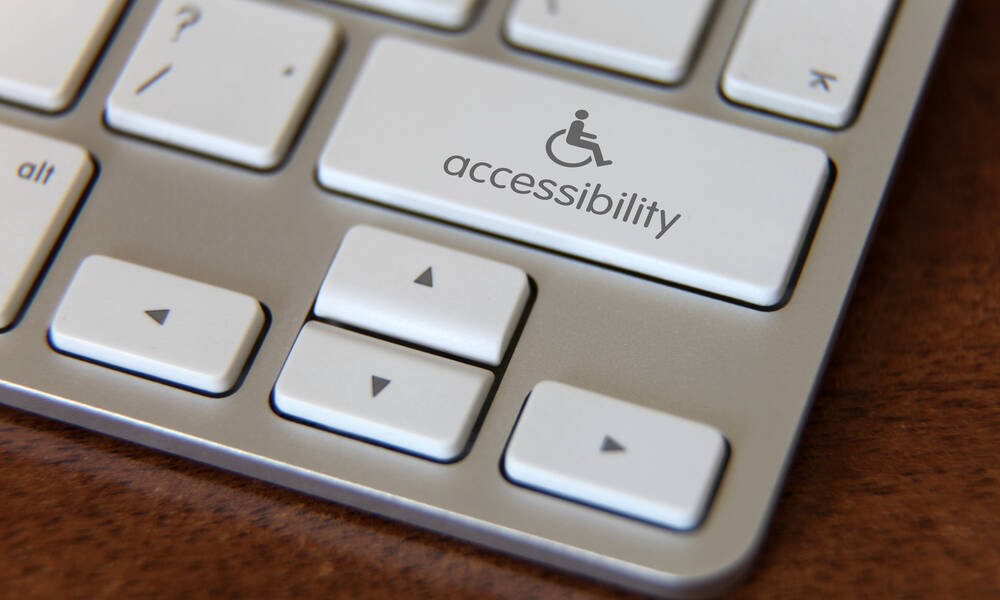
5 Ways to Make Your Virtual Event More Accessible
Many attendees have cognitive, hearing, or visual disabilities that could keep them from getting the full virtual event experience. Use these strategies to ensure that your association offers an inclusive event that accommodates all participants.
Virtual events may seem to be the ultimate in accessibility: Open your laptop, click on a meeting invite, and you’re there. But the digital divide means that people with disabilities are less likely than other adults to have high confidence in their ability to fluently navigate technology.
About 61 million adults in the United States have a disability, according to the Centers for Disease Control and Prevention. So it’s likely that a portion of your audience is part of the disabilities community. When you plan your next virtual event, keep these five tactics in mind to ensure that everyone in your audience can fully participate in the experience.
Ask about accommodation needs in registration materials. You won’t be able to provide necessary resources for all participants without understanding their needs. Cornell University’s guidance on event planning recommends including a disability accommodation statement in preregistration materials that invites participants with disabilities to request accommodations.
ASAE’s Meetings Accessibility Policy offers sample messaging so your organization can get started on making its own. Another useful resource, Arkansas Tech University’s Event Access Statement Guide, points out that event hosts should not require participants to provide documentation about their requested accommodations, nor should they be asked about the nature of their disability.
Give clear, step-by-step instructions for joining. How attendees join a videoconference varies by platform, so it’s essential to provide detailed, easy-to-understand instructions. For its 2020 International Symposium on Biomedical Imaging, the Institute of Electrical and Electronics Engineers provided a detailed instruction manual with images showing participants where to go, what to click and when, software to download, and how the event homepage should look.
Support attendees who can join by telephone only. Make sure attendees have the option to dial in by phone. Popular videoconferencing software, such as Zoom and Google Hangouts, has dial-in capabilities built in. Not only will this help people with visual impairments, but it will also help those who can’t afford other devices, which could be the result of a disability.
RespectAbility, a nonprofit dedicated to fighting stigmas and advancing opportunities for people with disabilities, recommends that all hosts and speakers say their names when they begin speaking, describe any charts and other visual elements they reference, and read aloud any attendee comments submitted through a live-chat platform. Moderators should also make sure that anyone who is not speaking is on mute; this clarity is particularly important for audio-only participants.
Avoid flashing effects in presentations. To assist attendees who have light sensitivity—such as those with photosensitive epilepsy—do not use videos, GIFs, or effects with strobing, high-intensity lights. In addition, the World Wide Web Consortium, the main international standards organization for the web, recommends that visual presentations have:
- clean, readable fonts; the Bureau of Internet Accessibility suggests using Arial, Helvetica, Lucida Sans, Tahoma, or Verdana
- sufficient color contrast of text and images of text—dark text with a light background, or vice versa
- text that is not fully justified, with line spacing at least a space-and-a-half within paragraphs, and paragraph spacing at least 1.5 times greater than the line spacing
Provide closed captioning. Closed captions are key for people with hearing loss. Yet in RespectAbility’s survey of nonprofits, only 14 percent reported using video captions.
Videos can be closed captioned for free using tools such as Amara and Subtitle Horse. But don’t stop at prerecorded materials: Live transcription services, also known as communication access real-time translation, can help people with hearing loss better experience a live presentation. RespectAbility recommends companies such as 1CapApp, StreamText, and Transcription Star, which provide live transcription services. Unlike automatic speech recognition, a live captionist can provide context and understand complicated or industry-specific terms.
(alexsl/iStock/Getty Images Plus)






Comments